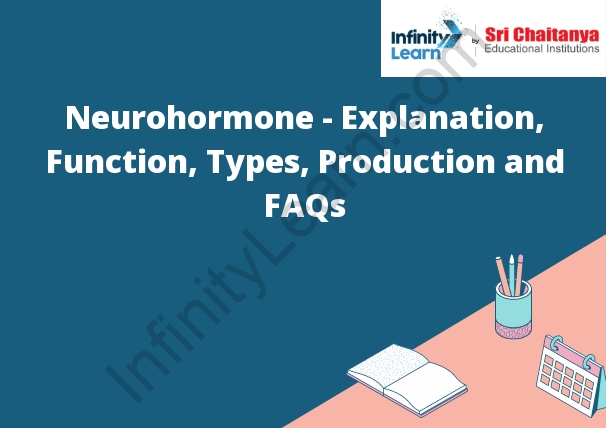Table of Contents
What are Hormones?
Hormones are chemicals that are produced by glands in the body. They are released into the bloodstream, and they travel to other parts of the body where they cause specific changes in the way the body works.

Neurohormone
A neurohormone is a hormone that acts on the nervous system. Neurohormones are produced in the hypothalamus and the pituitary gland. Some neurohormones are:
– Somatotropin or growth hormone
– Prolactin
– Thyroid-stimulating hormone
– Gonadotropin-releasing hormone
– Adrenocorticotropic hormone
– Melatonin
Neurohormones in Brief
Neurohormones are hormones that are produced by the nervous system. They are responsible for controlling many of the body’s functions, including mood, appetite, and energy levels. Some of the most common neurohormones include serotonin, dopamine, and norepinephrine.
Function of Neurohormones
Neurohormones are hormones that are released by the nervous system. They are responsible for regulating many important functions, including mood, stress, energy levels, and appetite. Some of the most important neurohormones include dopamine, serotonin, and norepinephrine.
Where are Neurohormones Produced?
Neurohormones are produced in the hypothalamus, a small, almond-sized region of the brain. The hypothalamus is responsible for many important functions, including the production of neurohormones. Neurohormones are hormones that influence the activity of the nervous system. They play a role in regulating many important functions, including hunger, thirst, body temperature, and the sleep-wake cycle.
Types of Neurohormone
There are many different types of neurohormones, but some of the most common include neurotransmitters, peptide hormones, and steroid hormones.
Neurotransmitters are chemicals that allow nerve cells to communicate with each other. They are released from the ends of one nerve cell and travel across the space (synapse) to the next nerve cell. There are many different neurotransmitters, and each one has a specific role in communication.
Peptide hormones are hormones that are made up of small proteins. They are released from the endocrine glands and travel through the bloodstream to other parts of the body. There are many different peptide hormones, and each one has a specific role in regulating the body’s functions.
Steroid hormones are hormones that are made up of large proteins. They are released from the endocrine glands and travel through the bloodstream to other parts of the body. There are many different steroid hormones, and each one has a specific role in regulating the body’s functions.
What is Oxytocin?
Oxytocin is a hormone that is produced in the hypothalamus and released by the pituitary gland. It is sometimes referred to as the “cuddle hormone” because it is released when people hug, touch, or sit close to someone else. Oxytocin is thought to play a role in social bonding and attachment. It is also involved in the letdown of milk from the breasts during nursing.
What is Vasopressin?
Vasopressin is a hormone that is produced by the hypothalamus and released from the posterior pituitary gland. It is also known as antidiuretic hormone (ADH) because it regulates water balance in the body. Vasopressin increases water reabsorption by the kidneys, which reduces urine output. It also promotes constriction of blood vessels, which increases blood pressure.
Vasopressin’s Primary Function:
The primary function of vasopressin is to regulate the balance of water and minerals in the body.
What are Neurotransmitters?
Neurotransmitters are chemicals that allow nerve cells to communicate with each other.
Neurotransmitter Signaling
A neurotransmitter is a chemical that is released from a neuron at a synapse and crosses the synapse to activate a receptor on a neuron on the other side.
There are many different neurotransmitters, and each one has a unique effect on the nervous system.
Some neurotransmitters are excitatory, meaning they increase the likelihood that the neuron will fire.
Some neurotransmitters are inhibitory, meaning they decrease the likelihood that the neuron will fire.
The effect of a neurotransmitter depends on the type of receptor it binds to.
There are many different types of neurotransmitter receptors, and each one has a unique effect on the nervous system.
Some neurotransmitter receptors are excitatory, meaning they increase the likelihood that the neuron will fire.
Some neurotransmitter receptors are inhibitory, meaning they decrease the likelihood that the neuron will fire.
Nociception
Nociception is the sensory perception of a noxious stimulus. This can be a response to either tissue damage or to a perceived threat to the body. The noxious stimulus can be either external or internal.
External noxious stimuli include heat, cold, mechanical pressure, vibration, or chemical agents. Internal noxious stimuli arise from inflammation, infection, or other tissue damage.
Nociceptive neurons are located in the dorsal horn of the spinal cord. They project to the brain, where the perception of pain is localized.
Pain perception
The threshold for a stimulus to be perceived as painful is individualized and can vary from person to person. A stimulus that is barely perceptible to one person may be excruciating to another.
There is no single, definitive answer to the question of how much pain a person can tolerate.
What is Norepinephrine?
Norepinephrine is a hormone and neurotransmitter that is responsible for the “fight or flight” response. It is produced by the adrenal glands and is involved in the regulation of heart rate, blood pressure, and the release of glucose. Norepinephrine also plays a role in the function of the brain, where it is involved in the arousal and attention of the mind.









